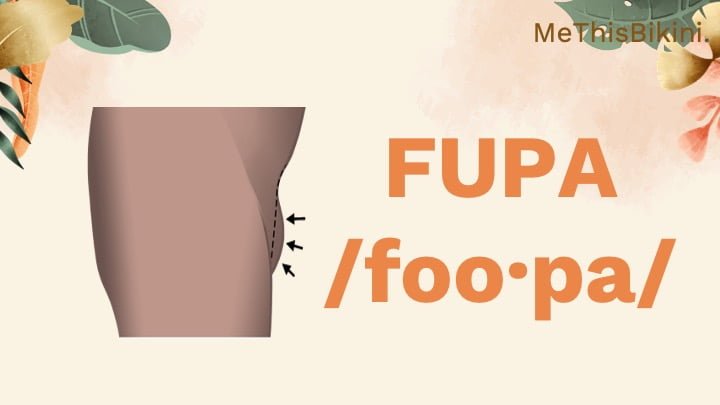FUPA: What is it?

When there is an accumulation of fat in the area between your hips and pubic bone, it can cause what is known as FUPA, which stands for fatty upper pubic area.
It’s pronounced as “foopa”, and can also be known as a pooch or a front butt.
On women, FUPA looks like a bulge or roll of fat that sits around or above the bikini line.
There are a range of causes, so its appearance can differ.
It can be disproportionate to the rest of the body because that’s where the fat wants to go first or as a result of pregnancy, or it can be proportionate to a curvier body.
Why do I have FUPA?

FUPA can be caused by an array of factors. Weight gain or rapid weight loss can cause FUPA to develop, as it is often a pocket of fat or loose skin.
Going through pregnancy is also a cause, especially if the birth was done through a cesarean.
It can also be due to genetics or the natural tendency of our bodies to store weight there, and aging and stress can contribute to the development of FUPA (Watson, 2023).
Having a FUPA is completely normal and akin to having excess fat or skin anywhere else in the body.
Beyoncé herself feels like her and her post-pregnancy FUPA “are meant to be” because she’s in no rush to go into “beast zone” to get rid of it.
But if you are ready to enter beast zone, then there are plenty of options to help reduce FUPA.
There are exercises specifically targeted at reducing FUPA, including the forearm plank and bicycle crunches. Cardio, yoga, and a healthy diet can also help, and there are several options for medical procedures like cool sculpting and monsplasty.
Wearing a bikini when you have FUPA
Having FUPA or any other body concerns should not stop you from enjoying swimming and going to the beach and looking darn fabulous doing it.
But if you are still working on coming to terms with your FUPA, then wearing a bikini and feeling confident and comfortable can be a work in progress, and that’s okay.
That’s where finding the right bikini is essential.
As with any body part, the wrong bikini can make us feel all sorts of terrible, whereas the right bikini can make us feel like a goddess, and the only difference is the bikini, not the body!
What are the best swimsuits to hide FUPA?

The answer to any question about tummy fat is almost always going to be high-waisted bottoms or a one-piece with tummy control qualities.
This is because it gives the double whammy of bringing everything up altogether and then compressing and smoothing the belly.
This can definitely help to shift attention away from FUPA, but there are a few more ways the style of a swimsuit can help hide FUPA.
Each of the following options can help to conceal or compress FUPA and help you feel your best:
Tummy control bikinis and swimsuits

Tummy control swimwear is perfect for anyone wanting help to smooth and compress their mid-section, as it works the same way as shapewear.
The stretchy but firm material and compression layers work together to give you a lifted, smooth and snatched look.
High-waisted bikini bottoms

These are a great option for hiding FUPA, as a bikini line will sit on or just above FUPA, which can be uncomfortable or dig in, creating a more bulgy appearance.
High-waisted bikini bottoms avoid this, as they sit further up all the way up to the hips. This helps to create a smoother look and avoids creating extra lines and bulges.
Striped bikinis

Wearing vertical stripes can be great for disguising FUPA, as it creates the illusion that the section is longer than it actually is, evening out the appearance of extra fat. The pattern diverts the gaze so that the body is not noticed.
Bikinis with the right colors
Color blocking can be a great way to wear a bikini when you have FUPA because when you wear dark colors on the bottom and light colors on the top, it creates a great illusion of an hourglass figure.
Related:
Bikinis with the right prints

Like the stripes, a printed bikini helps to distract the eye and also provides a type of camouflage over the area.
It works especially well with dark colors and small recurring patterns, as this narrows the appearance of the area.
